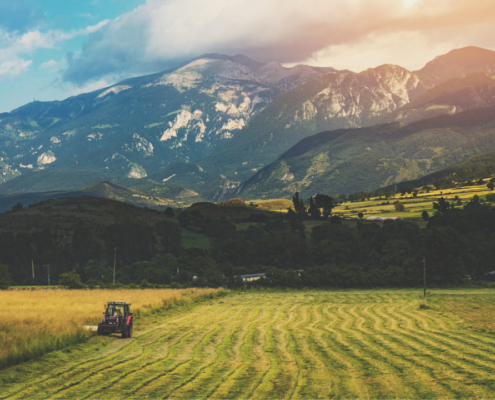Satellite Imagery is Helping Precision Agriculture Grow to New Height
IAAS Secretariat- Chloe
The world’s population is growing and yet, resources are shrinking. The Covid-19 pandemic is a firm reminder that we cannot take food security for granted.
Agriculture technology, or agritech for short, has become more important than ever before. It is a growth area that involves the use of modern technologies to increase production yield, food quality, and promote sustainability in the agri-food value chain.
Do you know that nowadays, farmers have been monitoring pasture health using satellite imagery? From Australian dairy farms to Indian crop insurers, the integration of geospatial data into a host of innovative solutions is helping global agriculture work smart and more sustainably. Measuring grass growth using satellite imagery provides a cost-effective method for improving grazing management.
Employing satellite imagery in agriculture sector is not new. Do you know that organizations have been utilizing images from space to study land-use ever since the first satellite of NASA’s Landsat program started beaming back pictures in 1972?
According to Zara Khan: “Agriculture has always been well suited to satellite technology. The difference between then and now is that the data we’re generating is able to be integrated into all the additional innovations taking place on the farm.”
Around 2 weeks ago in end of August 2022, a pilot satellite program has been successfully completed in the U.S. to efficiently measure pasture health a dairy farm. Daily satellite images were taken by Planet across 100 Organic Valley regeneratively farmed properties, negating the need for traditional on-the-ground monitoring of pastures, which are typically time consuming and labor intensive.
From the images, Organic Valley generated pasture reports for its farmers, including NDVI metrics and pixel-level detail allowing farmers to see trouble spots due to cows overgrazing or excessively wet or dry conditions.
Satellite imagery can also help managing the natural environment within and around farms, important as farmers strive for more sustainable agricultural practices.
Lastly, as Jessica Luhning, the Manager of Organic Valley Senior Sustainability Manager, said: “Our goals are to support our farmers, helping them raise happy cows and continuously improve their farm ecosystems, and with Planet’s highly accessible satellite datasets, we have been able to advance these goals.”




